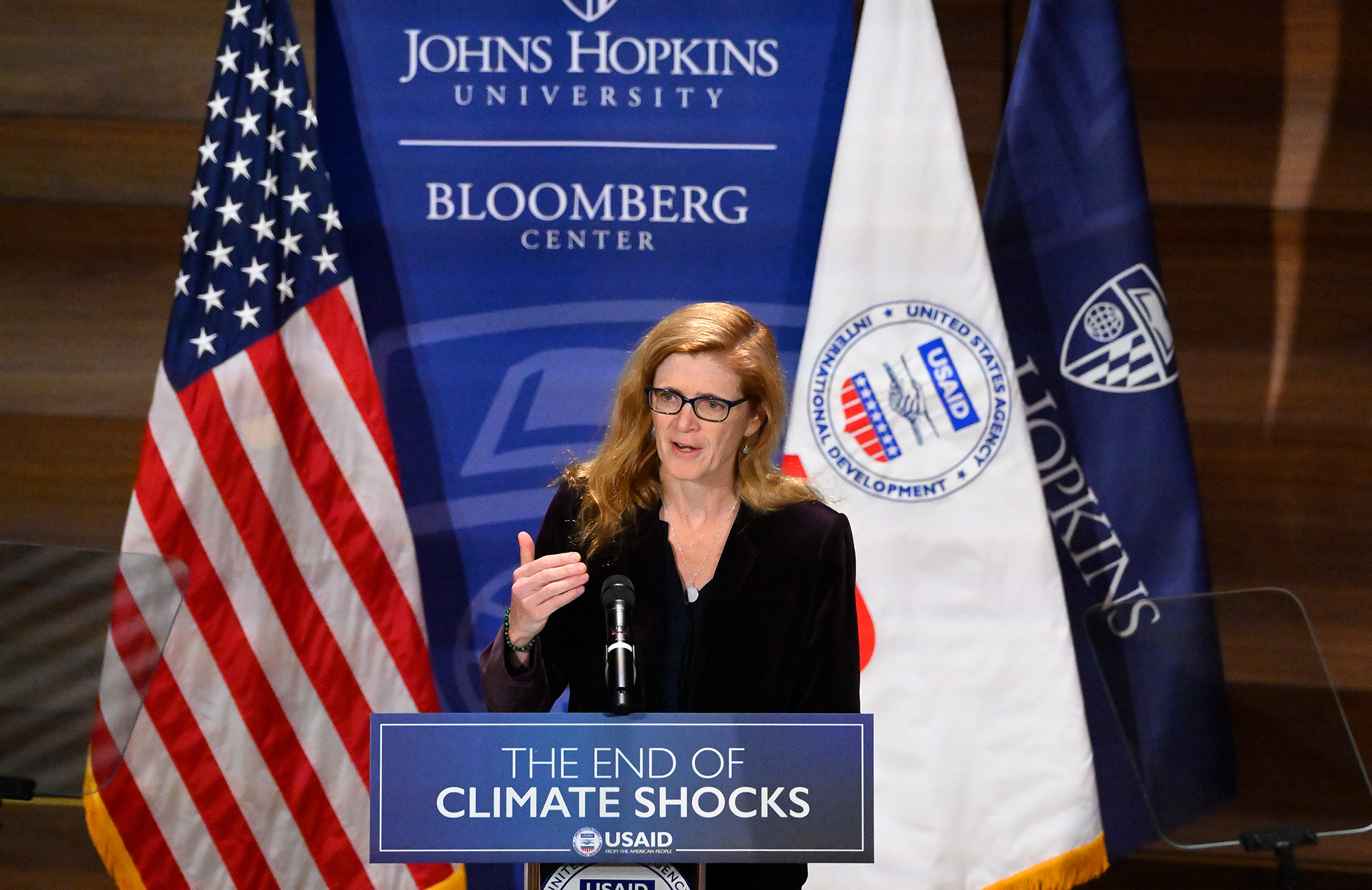Samantha Power: How USAID is building climate resilience
The USAID administrator urges public and private investment to better prepare the planet for climate change

Key Takeaways
- More funding is needed to respond to shocks a changing climate will bring, Samantha Power, the administrator of USAID said at a recent Johns Hopkins University Bloomberg Center event.
- USAID is funding a variety of programs to help developing nations withstand climate shocks.
Global investment in clean energy and other climate change prevention programs has skyrocketed in recent years—including nearly $400 billion in 2022’s Inflation Reduction Act. But more funding is needed to ensure the planet and its people are ready for the shocks climate change will bring, Samantha Power, the administrator of U.S. Agency for International Development, said at a recent event at the Johns Hopkins University Bloomberg Center.
“Despite the fact that we know that these disasters will continue … and we all expect them to get much worse, the world is still not investing in preparing our communities for these disasters at anywhere near the scale that we need,” she said.
Power, who oversees USAID, described seeing the effects of climate change first-hand, such as the 2022 flooding of Pakistan.
“It was like nothing I’d ever seen,” she said. “You fly out in a helicopter. You look down, you’re sure you’re over ocean. But you’re in fact 300 miles from the coast.”
Power outlined three projects USAID is funding to strengthen climate resilience in developing nations:
1. Partnering with NASA for Better Weather Forecasting
Power announced an additional $11 million in funding for SERVIR, a joint project of NASA and USAID. SERVIR uses satellite imagery from 50 countries to deliver advanced forecasts and real-time information about extreme weather events and other events, such as pest invasions.
In 2022, the use of the SERVIR system gave people in Malawi advance notice of cyclones, allowing them to prepare and evacuate if needed. Malawi’s Department of Disaster Management Affairs credits the advanced notice with preventing $40 million in losses and “even more importantly, [saving] many, many lives,” Power said.
2. Strengthening Disease Monitoring
As higher temperatures and flooding—and the standing water it brings—become more common, so too do cases of malaria. USAID is investing in a new malaria early warning system, called EPIDEMIA, that draws on real-time epidemiological and environmental data to provide a 12-week forecast of malaria cases. Health officials can use the predictions to prepare response efforts, Power explained.
EPIDEMIA is being piloted in Ethiopia, and Power said they hope to replicate it elsewhere.
3. Enhancing Flood Insurance
USAID recently awarded a grant to Floodbase, a company helping to provide insurance in rural Africa, where providers have previously struggled. The company uses satellite data to conduct inspections, which are faster and less expensive than physical ones. Farmers are then able to receive payouts quickly after a flood.
“With quick insurance payouts, farmers don’t have to do things like selling vital livestock to make ends meet, which can be incredibly disruptive to their long-term earning potential,” Power said. “Instead, those farmers quickly get access to the resources that they need to replant and rebuild.”
She added that Floodbase is using the grant to establish a proof of concept in Mozambique and Malawi and is then hoping to scale across the continent.